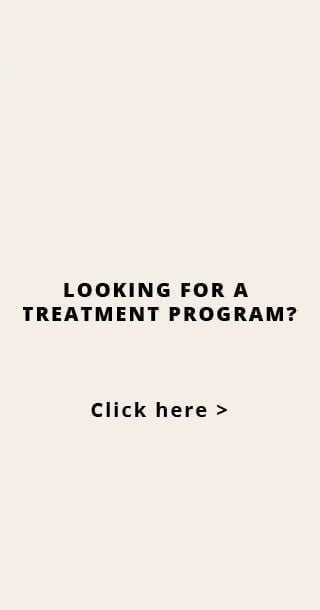Estimated reading time: 8 minute(s)
Gabapentin, sold under various brands such as Gralise, Horizant, and Neurontin, is a drug commonly used to treat nerve damage. While the drug has been proven highly effective for those fighting epilepsy, pain secondary to nerve damage, and restless leg syndrome, it also carries a risk of abuse with the potential to cause addiction. Even though the risk is not as pronounced as it is with other drugs, the risks to mental and physical health do exist, so it is essential to understand gabapentin addiction, how to spot it, and its management.
What is Gabapentin: An Overview
Gabapentin, commonly available under the brand name Neurontin, is a type of anticonvulsant drug used to manage neuropathic pain disorders and seizures. It belongs to a drug class called gabapentinoids and is a less-addictive alternative to opioids.[1] Nevertheless, gabapentin is very much likely to cause abuse in addiction amongst many patients who are using it as medically indicated.
Gabapentin has a very similar structure to a chemical messenger called Gamma-Aminobutyric Acid or GABA. GABA is a chemical in the brain that directly affects the nervous system to trigger feelings of calmness and relaxation and manage poor sleep, anxiety, and nerve pain. It alters the calcium channels to ease nerve pain and reduce seizures. Despite being a medically-approved drug, gabapentin can lead to multiple side effects. Some immediate side effects of this medication include the following:
- Fever
- Poor coordination
- Dizziness
- Double vision
- Drowsiness
The side effects mentioned above may increase or decrease in severity depending on how much gabapentin a person uses and how frequently. In the long run, gabapentin can lead to multiple health issues that may persist after a person has stopped using it. Some of these side effects include the following:
- Mood changes
- Depression
- Behavioral changes
- Anxiety
- Weakened muscles
- Memory loss
Understanding Gabapentin Addiction Symptoms
Many people, especially those who have been using gabapentin for a long time, fail to understand the risks associated with its use. While the addiction potential for gabapentin is low compared to other stronger medications, like heroin and oxycodone, ceasing to use it all of a sudden can lead to withdrawal symptoms, a vital indicator of an underlying physical addiction. The risk of these withdrawal symptoms happening is generally low, internationally 1%, and the problem more commonly occurs in people who mix gabapentin with other drugs to amplify the overall effects. [2]
Following are some of the most common symptoms of gabapentin dependency and possible addiction:
- Going to multiple doctors to get additional prescriptions for gabapentin
- Lying about or exaggerating the physical symptoms to healthcare professionals to get more prescriptions for gabapentin
- Trying to stop using gabapentin but failing
- Changes in social circles and habits
- Changes in personal hygiene habits and general self-neglect
- Feeling uncomfortable and miserable when gabapentin is unavailable
- Failure to quit despite experiencing financial, legal, and social consequences
Can You Get Addicted to Gabapentin? The Possible Risk Factors
While anyone using gabapentin is vulnerable to developing an addiction to this drug, the risk is exceptionally high in certain groups of people, such as the following.
Family History
Addiction has a very high genetic component. People with a first-degree relative abusing the drug are at a higher risk of developing similar patterns in the future.
Age of Initial Use
The age at which a person starts using any drug, including gabapentin, is also a significant risk factor for addiction. The earlier a person starts using it, the greater their chances of acquiring a habit.
Presence of Co-occurring Disease
The presence of co-occurring diseases can also force many people to start self-medicating with gabapentin and other medications to control their symptoms.
Traumatic Past
Sometimes, abusing drugs like gabapentin attempts to suppress the painful memories of the past. This phenomenon is particularly true in people with characteristics of posttraumatic stress disorder (PTSD)
Environmental Factors
Growing up in an environment where drug use is common or living in a society that normalizes and exerts peer pressure for drug use are some factors that promote the risk of gabapentin addiction.
Treating Gabapentin Dependency: What Professional Treatment Includes
If you or someone you love has been suffering from gabapentin addiction, seeking professional treatment at once is imperative. You may consider getting help from a rehabilitation center where a team of highly-trained and experienced doctors, nurses, therapists, psychiatrists, and psychologists will care for your medical and psychological needs. Depending on how severe your addiction is and other personal factors, your treatment program may include one or more of the following steps:
Intervention
Intervention describes a professional-led discussion with someone fighting an addiction. During these sessions, the loved ones of an addict sit down with them and try to get their concerns about their addiction. An expert called an interventionist helps the loved ones and family members prepare for this discussion beforehand so that they can communicate their feelings in a proper way without any judgments or confrontations.
As a part of interventions, the family members and friends may discuss their worries about how gabapentin use is destroying the life of their loved ones. As a part of the session, they may also gently introduce the idea of seeking help from a rehab. Interventions can be repeated as frequently as needed to make someone realize the adverse effects of gabapentin addiction. Once they agree, the family members and loved ones can support them in seeking help.
Detoxification
Once an individual agrees to seek help for gabapentin dependency, they will most likely begin with the detoxification process. The detox process involves stopping gabapentin use suddenly or through slow tapering, depending on personal factors. Sometimes, this process may lead to uncomfortable symptoms, such as muscle aches, vomiting, nausea, and other flu-like symptoms. These symptoms can be extremely painful and may lead to relapses; therefore, undergoing a detox under the supervision of a detox professional is highly recommended. Throughout the process, a patient remains under the care of a detox team that continues to monitor them round-the-clock. The team may also use medications to control the unwanted symptoms of detoxification and make the process easier.
In general, a detox program runs for around 7 to 10 days but may continue beyond the set period depending on individual circumstances. Once the detox process is complete, most patients continue treatment in a residential program to identify and address the psychological element of addiction.
Residential Rehab
While detox is only meant to help gabapentin addicts cease their drug use, residential rehab is what supports them in quitting their addiction altogether. As a part of the residential program, patients move into an onsite accommodation and continue to live in a secure and monitored environment until they successfully overcome their addiction. For some people, this duration is 28 days; for others, residential care may continue for up to 6 months or more. Because of continuous expert supervision and a drug-free environment, patients are significantly less likely to relapse and start abusing gabapentin once again.
Residential rehabs provide private or semi-private rooms, access to communal areas, three meals daily with snacks, and various recreational and holistic amenities. The facilities available in a residential rehab may greatly vary from one treatment facility to another but may include fitness centers, swimming pools, spas and massage therapy, and more. Mentioned below are some common types of therapy that experts at residential care homes use to help people break the cycle of gabapentin addiction
- Cognitive behavioral therapy
- Family programs
- Yoga and meditation therapy
- Dialectical behavioral therapy
- Individual and group counseling
- Equine-assisted therapy
- Motivational interviewing
- Art and music therapy
Outpatient Rehab
Outpatient rehab for gabapentin addiction is a perfect plan for someone with tons of work and personal responsibilities that hinder them from joining residential care. Such treatment plans allow patients to contact therapists and doctors a few times a week and slowly detox from gabapentin use without having to live onsite. As an outpatient, they come to the rehab on fixed days and engage in a few hours of therapy per day, following which they are free to go back to their homes. Keep in mind that an outpatient rehab may not be appropriate for people with severe addiction issues and polysubstance use and those without a positive environment back home.
Aftercare Program
After completion of therapy, individuals with gabapentin addiction work with an addiction specialist to formulate an aftercare plan. The aim of aftercare is to minimize the risk of relapses by helping patients identify their triggers and develop healthy responses to them. Aftercare also includes a relapse prevention program under which patients come up with a list of emergency contacts to contact if they feel like using gabapentin again. Additionally, they can continue to be in touch with their therapists and counselors as an outpatient or join support groups in the community to get their progress monitored.
FAQs
How soon can I develop an addiction to gabapentin?
There is no fixed duration of time a person needs to develop gabapentin addiction. Some people may develop it earlier than others despite using it in the same dose for similar indications. Some personal factors that determine this time duration include age, health status, sex, body weight, and the dose and frequency of gabapentin use.
Is gabapentin addictive?
Because gabapentin does not mess with the opioid receptors and only focuses on GABA neurotransmitters, experts do not consider it a very addictive substance. However, the drug can still lead to withdrawal symptoms in people who suddenly stop using it after abusing gabapentin for a long time. Moreover, gabapentin is a sedative that can produce a feeling of euphoria, so the risk of becoming psychologically dependent on it is also very high. Unfortunately, despite the low risk of addiction, many people continue to abuse the drug across the United States. A 2015 study revealed that up to 15% of all people abusing opiates also abused gabapentin.
Can I mix gabapentin with alcohol?
It is never a good idea to mix prescription drugs with alcohol. Drinking alcohol while having these medications in the system, including gabapentin, is something that experts strictly advise against doing. If you fail to clear either of the substances from your body before consuming the other, they may potentiate and amplify the effects of one another. This amplification is, unfortunately, what many drug abusers seek and frequently use the combination as a popular cocktail. However, remember that doing so can land you in the hospital with symptoms like blackouts, loss of control of motor skills, and even death.
Can gabapentin cause depression?
Some studies have found that using gabapentin may lead to the development of low mood, irritability, depressive thoughts, and suicidal tendencies. However, these side effects are rare, and most people using the medication do not develop them.
References
1 Yasaei R, Katta S, Saadabadi A. Gabapentin. [Updated 2022 May 2]. In: StatPearls [Internet]. Treasure Island (FL): StatPearls Publishing; 2022 Jan-. Available from: https://misuse.ncbi.nlm.nih.gov/error/abuse.shtml
2 Smith, R. V., Havens, J. R., & Walsh, S. L. (2016). Gabapentin misuse, abuse and diversion: a systematic review. Addiction (Abingdon, England), 111(7), 1160–1174. https://onlinelibrary.wiley.com/doi/10.1111/add.13324


